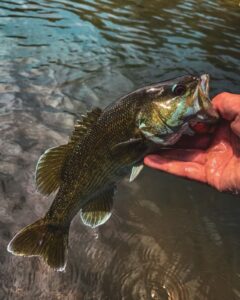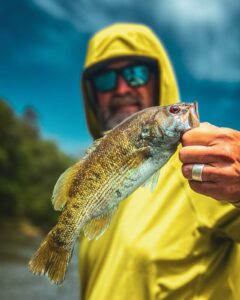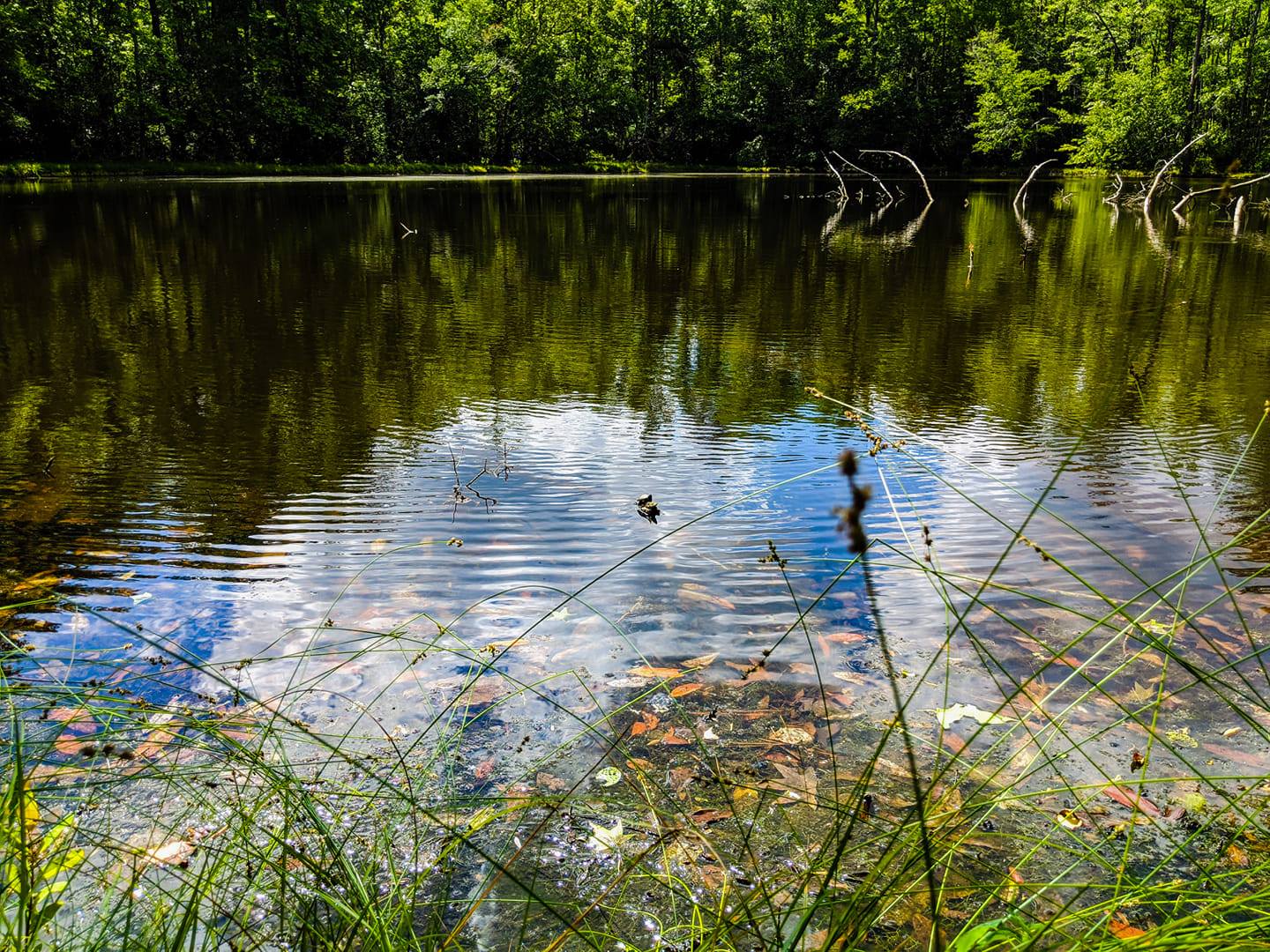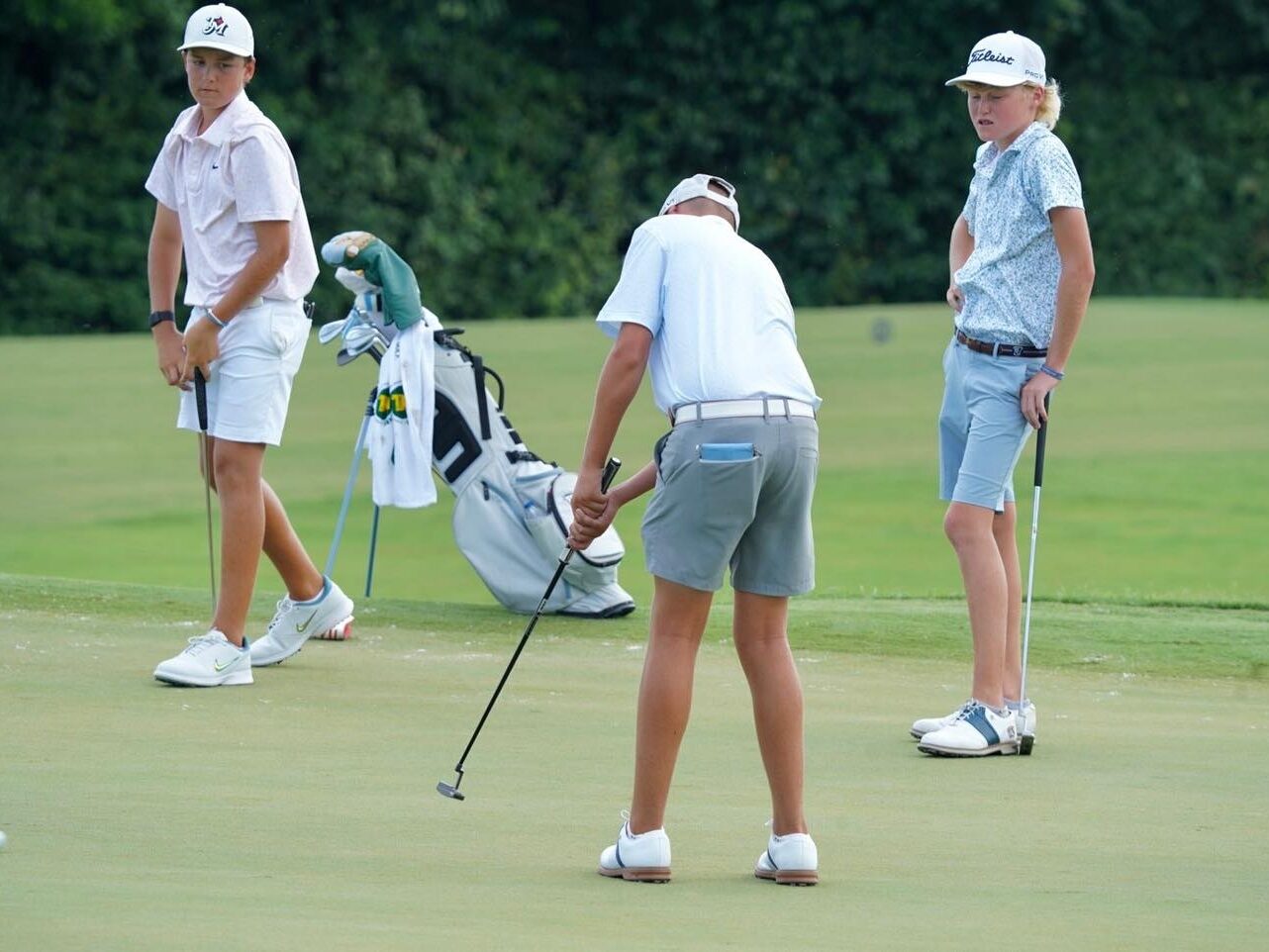Redeye Bass are the trout of the Deep South.
These native members of the black bass genus occupy the same niche in Alabama’s warm-water rivers as the native Brook Trout – and stocked Rainbow and Brown Trout – in the cold-water rivers further up the Appalachian Mountain range.
Fishermen willing to wade or float through Alabama’s rocky creeks will soon discover that pound-for-pound, redeye bass fight and jump like a trout and are just as challenging to catch.
One of the best things about fishing for redeyes and trout is that both fish tend to thrive in beautiful, unspoiled running water – in other words the prettiest places to spend a day outdoors.
Redeyes cannot survive over time in still water like lakes and reservoirs or muddy flowing waters. They do best in clear-water creeks and rivers flowing over rocky bottoms above the fall line. In many rivers above the fall line, you might catch Alabama Bass or even Largemouth Bass in deep, slow-moving, silty-bottom pools and backwaters. Where the river moves fast over a rocky bottom, you’ll catch redeyes using the same tackle.

(Brad Tarbert/Facebook)
Alabama is home to four species of redeye bass named for the watersheds where they live: the Warrior Redeye, Cahaba Redeye, Coosa Redeye and Tallapoosa Redeye. A fifth redeye, the Chattahoochee Redeye, could possibly be found in Alabama, as the Chattahoochee River system makes up part of the border between Alabama and Georgia. However, poor water quality south of the Atlanta area keeps most of the Chattahoochee Redeyes confined to smaller waters north of the big city. The entire range of redeye bass is limited to Alabama, Georgia, parts of Tennessee and South Carolina. The redeye bass in South Carolina’s Savannah River basin is sometimes called Bartram’s Bass but at this point it has not been identified as a separate species.
Before 2013, all four Alabama redeye bass were considered the same species. Alexander City biologist Winston Baker, working with Dr. Carol Johnston of the Fish Biodiversity Lab at Auburn University and Dr. Rebecca Blanton, a geneticist at Austin Peay State University, proved that redeyes living in each river drainage were separate species.
Redeyes are smaller bass, usually between 8-14 inches long with the average mature bass weighing in between 8 ounces and 1 pound. But they do get considerably larger in the right conditions. The Alabama state record is currently held by Terry Johnson of Oxford who landed a 3-pound, 2-ounce redeye in Choccolocco Creek on March 8, 2000. The South Carolina Department of Natural Resources says its state record Bartram’s Bass weighed in at 5 pounds, 2 1⁄2 ounces. Redeye bass in Alabama are long, slender fish with olive to bronze sides and darker mottled blotches or bars. Their belly is lighter in color, approaching white. Fin color varies with species. In breeding season, males will get bluish-green colors on their head and throat. The redeye’s upper jaw extends to the rear of its eye but not beyond.
To the casual observer, redeye bass look like, well, a bass. They are part of the 13-member black bass group – Micropterus – that includes largemouth, smallmouth, Alabama bass, spotted bass, shoal bass, redeyes and others. To complicate the issue, redeyes will often interbreed with other members of the bass family, producing fish with characteristics of both species. And you can’t rely on this fish’s common name as an identifier either. Most black bass have eyes that can turn red when they are agitated, such as when they have a hook in their mouth and they’re being reeled in. Redeyes certainly do have red eyes sometimes; but sometimes they don’t.
However, there are two visual features that will help you quickly identify a purebred redeye from Alabama waters. First is a white edge on the fish’s rear three fins, most visible on the top and bottom of the tail fin. Second is a silver-white crescent on the back of its eye.
Where you catch the fish is also a tip-off. Redeyes are almost always caught in swift, clear water and small eddies in rocky creeks and rivers in the Warrior, Cahaba, Coosa and Tallapoosa watersheds. There have been redeyes caught outside of these river systems, however, they are thought to have been caught in their native rivers and released outside their range.
Coosa Redeyes have been stocked in places as far away as Puerto Rico. These bass become sexually mature between 2-4 years old. During the breeding season, when water temperatures get between the mid 50’s to high 60’s, redeye bass will find pools where the males will excavate a shallow nest, much like other bass. Females will deposit 2,000-3,000 eggs in the nest which the males fertilize and guard until they hatch. Scientists think the life expectancy of redeye bass is about 10 years.

(Brad Tarbert/Facebook)
If you have experience fishing for trout, redeyes will be in the same locations. Since both fish live in fast-moving water, their hunting strategy is similar. They find a protected place just out of the main stream where they can save energy by not swimming as hard and wait for the current to sweep food to them. Then they dart out quickly and attack their prey. A redeye’s diet consists primarily of insects, which is another thing they have in common with the trout species. However, they will eat most anything that comes by in the current, including crawfish, salamanders, worms and small fish.
Redeyes are preyed upon by other large fish including some black bass, fish-eating birds and humans. Because all redeyes have a relatively small native habitat limited to a single watershed, it’s best to catch and release these fish. The Cahaba Redeye and Chattahoochee Redeye both have very small and threatened ranges. The City of Birmingham is right in the middle of the Cahaba Redeye’s home water. Logging and agriculture, building of dams that create reservoirs, development and pollution all have the potential to degrade the high water quality required by redeyes. The stocking of exotic species that prey on redeyes, such as the saltwater striped bass stocked in Lake Martin, can also harm redeye populations. As a result, there is the potential for several of these species to become protected in the future.
For now, all of Alabama’s redeye bass are fair game. If you see a rock or a log in a current with an eddy behind it, there’s a good chance a redeye will be waiting there, and maybe in front, too.
Look for places where slower water is holding right beside fast water. Under a rocky shelf, in a trough with fast water moving over it, at the base of a small waterfall – that’s where to cast your line for redeyes.
Baits include smaller jigs, plastic worms and spinners of different sorts, and flies that imitate insects or small fish. Tackle could be a regular bass rod, but since redeyes are smaller than most bass, an ultralight spinning rig or a lightweight flyrod will work just fine and provide the most challenging and exciting fishing for these feisty Alabama natives.
This article first appeared in the Winter 23’ AWF Magazine.




